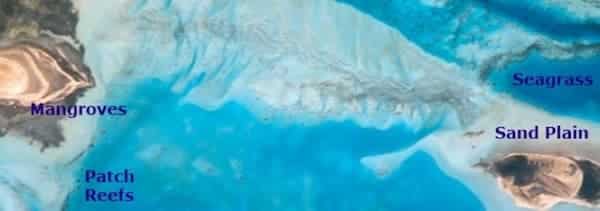Mangroves are a unique group of large shrub-like plants that grow in thick, physically complex “forests” that line many tropical and sub-tropical shores.

Mangrove forest. © Fotolia
One of the rare terrestrial plants able to tolerate direct immersion in sea water, they have adapted to saline conditions where other plant life cannot survive by means of salt-filtering roots and salt-excreting leaves.
These specialized adaptations enable this group of plants to play a key role in creating land from the sea. Sediment mounds accumulated by seagrass meadows within the back reef zone may eventually form sufficient substrate for initial mangrove colonization.
Once established in this manner, these hardy pioneers grow and propagate rapidly, increasingly adding to the accumulation of ever greater amounts of sediments.
In this capacity, they are instrumental in the building of new shorelines and small islands within coral reef lagoons and other protected inshore waters.
When present within coral reef ecosystems, mangrove forests occupy the shoreward margins of the back reef. Mangroves have the capacity to contribute a good deal to coral reef ecosystem productivity and biological diversity by providing food and shelter for a variety of other forms of marine plant and animal life.

Mangrove forests near coral reef. © Fotolia
In the Caribbean region, research has demonstrated that these plants have a strong influence on nearby coral reef fish community structure.
When associated with adult habitat such as seagrass meadows or coral reefs (see photo, left), they substantially increase the biomass of some commercially valuable species.
The complex prop root system serves as a nursery habitat that increases the survival rates of young reef fishes, as well as a substrate to which all manner of algae, sponges, and other invertebrate coral reef animals may attach.
Falling leaves and nesting birds add nutrients to the water below, thereby enhancing opportunities for the growth of other nearby marine life.
Additionally, by trapping and consolidating sediments that would otherwise be swept away and dissipated by the sea, the presence of these plants reduces the chance of nearby seagrasses and corals being damaged by excessive sedimentation.
Nonetheless, these plants are clearly not essential to the formation or maintenance of healthy coral reef ecosystems; many extensive and well-developed coral reefs exist without them.
Our pages on the other two major zones of the coral reef biome can be accessed through the menu below.







